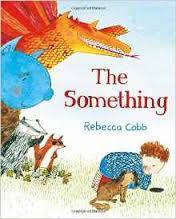I have just finished reading (and taking a lot of notes!) on this inspiring and easy to read book by Donalyn Miller.

Donalyn Miller is a sixth grade teacher in the US with a huge passion for students becoming lifelong readers and she adopts some unconventional approaches to meet this aim.
She argues for the importance of independent reading where children have free choice over texts and regular sustained reading time (and related discussion) rather than reliance on skills based commercial schemes, or comprehension worksheets. Her students gain high scores on the reading tests year after year with her ‘reading freedom’ approach.
She sets her students the challenge of reading forty books during the year with her (aiming to select from a range of genres) to ensure that everyone always has a book on the go, both reading at home and in their class time in school. She is an avid reader herself and reads lots of children’s literature to ensure that she can make personalised recommendations to her children but also encourages peer recommendations through short ‘book commercials’ in the classroom where a student can recommend and review a book they have read to the rest of the class.
A few other great ideas and values from the book:
-time for reading is well spent. The question should not be ‘how can we make time for independent reading?’ rather ‘how can we not?’ Independent reading time shouldn’t just be used for behaviour management or as an add on.
-an effective reading teacher needs to be a role model and enjoy reading regularly themselves, including children’s books. (See Lundberg and Linnakyla, 1993 for the link between the reading habits of teachers and reading achievements of their students).
-It’s good to discuss how we select books: ‘I choose short books’ / ‘I only read fantasy books’ / ‘I like to read some books over and over’ / ‘I read the ending first and then if I like it I read the whole book’ …these are all valid choices. You can also highlight with the children that the book everyone else is raving about might be the one you just can’t get on with. Reading is a very individual thing. Equally, we can agree when children say some books are boring, that’s true. If they think all books are boring, then they just haven’t found the right ones yet!
-Its important to acknowledge the ‘less than highbrow’ choices (‘diary of a wimpy kid’ or ‘captain underpants’ spring to mind) and to validate popular fiction which gets many reluctant children reading. Just as adults will sometimes enjoy popular fiction too, these choices should be supported by teachers and then we can encourage them to branch out and broaden their repertoire of books.
‘to acquire the habit of reading is to construct for yourself a refuge from almost all the miseries of life’
W. Somerset Maugham





